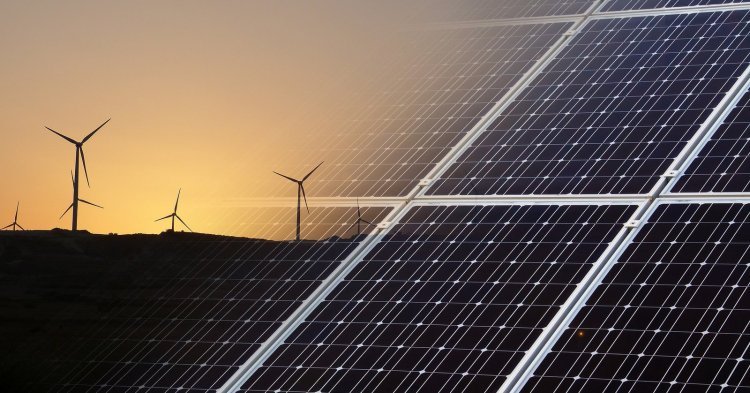Innovation is closely linked to the energy transition. Its role is to accelerate the energy transition through the development of green technologies whose large-scale commercialisation enables economies of scale. Innovation also enables the energy transition to be more efficient from a technological and a social point of view. Therefore, multidimensional innovation must sit at the core of the European approach: a socially-fair transition based on new technologies and new business models is key to the success of the EU’s energy transition.
Europe’s “impossible trinity” in the field of energy
As mentioned above, the EU is dependent on energy importation. 55% of its yearly consumption comes from non EU-countries, mostly outside Europe. The strong development of renewable energy sources is not enough to offset this dependency. Some provider countries – like Russia – have been trying to use it as a political weapon to serve their own interests. This is why the EU has been building an “Energy Union” to complete the energy single market.
Although other regions in the world are much more vulnerable, the EU does not seem to be fully prepared to the effects of climate change. Floods, heat waves and storms increasingly happen and are a burden for growth and investments, not to mention the number of victims. It seems to be obvious that accelerating innovation in the energy transition is key to respecting the climate pledges of the EU.
Finally, the prices of all conventional fossil fuels are pegged to the oil price. With the scarcity of conventional oil resources and the development of costly offshore drillings, the oil price is on the rise. This is bad news for the EU, especially for its trade balance and its competitiveness.
This energy trilemma can only be solved through massive investments in renewable energy sources and energy efficiency programs. It is increasingly clear that the EU has no time to lose if it is to avoid the worst effects of climate change. In this paradigmatic shift, the margin of innovators is quite broad. Indeed, we know that we need to keep the increase in global average temperature well below 2°C above pre-industrial levels. The EU also tried to calculate the necessary investments to meet this target. Unlike for the development of the Internet, the innovators in the energy transition know how to invest. The legal framework is also established in order to help investors.
To implement an innovative energy transition, the EU is well-placed to become a leader in the world.
How to spur innovation: the ambitious European strategy
The strategy developed by the EU aims at covering the whole innovation chain in the energy transition, from the ideas discovered in laboratories to the large-scale commercialisation of a wide range of green technologies.
The universities and the research centres have an essential role in the process because they do fundamental research, more likely to produce disruptive innovations which can change a whole part of the energy sector. The added value of the EU is the creation of structures and platforms to encourage cooperation between the different actors and thus a better flow of innovative ideas. Examples of this include the European Energy Research Alliance and the Association of European Renewable Energy Research Centres.
One should not forget the role of businesses. Together with universities and research centres, they must create synergies, called “knowledge triangles”. Along with the aforementioned organisations, the European Institute of Technologies and the European Technology and Innovation Platforms are great opportunities for scientists and industries to develop innovative solutions together.
According to the third Energy Union report (2017), the EU is the world’s second-biggest innovator in the energy transition. The EU could therefore export its model of innovation to developing countries to help them transform their energy systems.
A wide range of financing tools
To make the European energy transition a success, public money is paramount to attracting private investments. The Horizon 2020 innovation funding program supports many green projects. From 2021, “Horizon Europe” will be the largest-ever innovation funding programme. The European Commission proposes to allocate €100 billion, including a €15 billion cluster for energy, climate and transport.
Other financing tools can be mentioned: the “Juncker Plan” which attracts a lot of private investments thanks to public guarantees; loans from the European Investment Bank; the structural funds; the Emission Trading Scheme. The development of crowdfunding is also very interesting to underline: although the amount of money available for the investments is much lower than what public and industrial sectors can gather, it shows that a growing number of citizens is ready to play an active role in the innovative energy transition.
Nevertheless, the EU has been suffering from a lack of investments, compared to the US, Japan or even China. This can jeopardise the leadership of the EU.
A “Green New Deal” to make the European economy fully competitive?
Innovation is required across all sectors of the European economy to steer the EU towards “climate neutrality”. The energy transition is a unique opportunity to strengthen the EU’s economy: millions of jobs may be created in the next decades if the EU fully implements its strategies to fight climate change. Little adjustments might lead to significant job gains. The added value created by these jobs may also be higher than that of many current jobs, which will be very beneficial for the EU’s GDP.
The large-scale development of local sources of energies – sun and wind are present across Europe, unlike fossil fuels – may vastly reduce Europe’s dependency on imported sources of energy. To put it in a nutshell, the energy transition would be very beneficial to the EU’s economy – both from macroeconomic and microeconomic perspectives.
Innovation would make the European energy transition even more beneficial. Its role in accelerating the energy transition would create more jobs and produce more sustainable growth. By acting so, the EU can build competitive advantages based on a steady willingness to produce breakthroughs in the energy field.
Should the EU launch a vast investment plan in the energy transition and for innovation – a “green new deal” – to save the European project ? When implementing an innovative energy transition, one must not forget the role of all the citizens. Multidimensional innovation must be at the core of the European strategy and the citizens must accept the changes created by the development of new sources of energies. A socially-fair energy transition based on social and technological innovation is therefore necessary to usher in a new era of sustainability and shared prosperity.



Follow the comments: |
|
